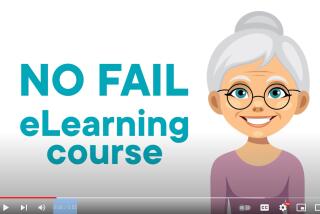Require a Mature and Responsible Approach to Driving
- Share via
* Re: The letter from Christine Shukin of Fullerton (Sept. 10) which concluded, “Am I the only one who believes the legal driving age should be 18 instead of 16?”
I have felt for many years that the legal driving age should be raised to 18. Shukin notes that the many teen-age driving fatalities “were a result of immaturity and irresponsibility of the drivers.” Tragic as these fatalities are, I see a more pervasive problem.
Once a teen-ager gets that license, there is a tremendous urge, particularly among the boys, to own and drive a car. The only way most teen-agers can support a car (initial cost, yearly insurance, operating expenses and repairs) is to get a job. In these cases school can’t help but suffer. When the choice must be made between giving up the car and job or dropping out of school, my guess is that not one teen-ager in 10 will opt for staying in school. I believe this is a major cause of the high school dropouts, which must number in the tens of thousands yearly throughout the country.
I admit that changing the driving age all at once would create a tremendous protest among our teen-agers. However, I think there is another possibility that might work even though it would still elicit some protests. Beginning on a certain date, raise the driving age to 16 years and one month. Then two months later, raise the driving age to 16 years and two months and so on. This gradual phase-in would raise the driving age two years (from 16 to 18) over a four-year period.
An additional requirement: no driver’s license under age 20 without a high school diploma or verification of full-time high school enrollment.
HOWARD SHELDON
Yorba Linda
* In your front-page article, “Short Life and Slow Death in the Fast Lane,” (Aug. 27) James Marshall says, “It makes you wonder if there is any way to stop these things from happening.” I think I have at least two possible [solutions].
As a former locomotive engineer [and] Army Reserve truck driver, and after recent commercial truck driver training and small-bus driver training, I have developed the feeling that people regard driving as being like sitting in their living room couch; that people regard their pretty automobiles, pickup trucks, four-wheel drives and vans as recreational fun transporters, rather than as the highway machines that they are.
As my truck-driving instructor would say when we saw dangerous maneuvering on the highway, “Young people today think they’re immortal.” Not only are they not getting the message that driving is a serious responsibility, requiring no less regard for traffic safety than is present in an airplane cockpit or a locomotive cab, but they probably even see their own parents not stopping for stop signs, speeding, changing lanes without yielding lane-to-lane, and ignoring turn indicators of vehicles when they attempt to pass around them. Not only does it seem that, once the DMV written test is passed, drivers do not have to know the law any more, but it all adds up to the increasingly frequent tragedies, which are not accidents, that we are witnessing.
I remember the words of one of my Army instructors: “If everybody would do exactly what they are supposed to do, there wouldn’t ever be any automobile [crashes].” I also admire one of Texas’ state highway mottoes: “Drive friendly.” To me, it means do not drive with arrogance and stupidity, a common sight today.
RONALD KINUM
Huntington Beach






